Publications

April 1, 2010
This fact sheet examines out-of-home placement rates for children removed from their homes because of abuse or neglect. The data finds that children in remote rural areas have overall higher rates of out-of-home placements. It also provides data on placement rates by rural or urban status to help inform policy makers as they discuss the child welfare system.

April 1, 2010
According to a new study, New Hampshire youth, ages 13 to 24, are more likely to complete school, be employed, and have lower obesity rates than their peers nationwide but fare worse in national measures of alcohol and substance abuse. This brief, a co-publication with the Children's Alliance of New Hampshire, provides an overview of youth well-being in New Hampshire calculated from national…

April 1, 2010
A new brief from Nordblom Fellow Meghan Mills at the Carsey Institute finds that youth in New Hampshire's North Country have challenges in accessing support for substance abuse and mental health issues. Mills also finds that the providers face unique challenges, from getting referrals to hiring professionals, all while working without a functional network.
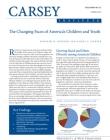
April 1, 2010
The U.S. Census Bureau estimates indicate that between July 2008 and July 2009, 48.6 percent of the 4 million children born in the United States were minorities. In contrast, nearly 60 percent of the children born ten years ago were non-Hispanic white. This rapid change demonstrates that America's youth are at the forefront of the country's rapidly shifting demographic makeup. This…

April 1, 2010
When the school year ends, many low-income children rely on the USDA's Summer Food Service Program (SFSP) to supplement their diet. But less than one-third of SFSP sites are located in rural communities and rural children participate at a lower rate than those in more urban areas.
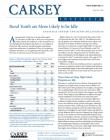
January 29, 2008
Rural young adults, ages 18-24, are more likely to be idle not in school, the labor force, or the Armed Forces than their urban counterparts. Among rural high school dropouts and racial-ethnic minorities, rates of idleness are even more pronounced.

April 7, 2010
More than 1,000 adolescents and young adults in New Hampshire are homeless, and their numbers are growing. The brief, co-published with the Children's Alliance of New Hampshire, provides an estimate of homeless youth in New Hampshire calculated from national and state data and describes the needs of homeless youth based on interviews and a survey of providers of homeless services in the…
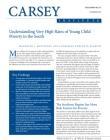
July 1, 2010
It is widely known that the South is home to some of the places with the highest rates of child poverty. To address the many challenges poor families face there, policy makers and community leaders need to understand the complex factors that converge in this region of the United States. This brief presents an analysis of national and state-by-state data to help readers understand high child…
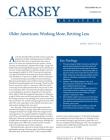
July 1, 2010
This Carsey brief finds that the percentage of Americans age 65 and older remaining in the labor force continues to grow steadily in urban, suburban, and rural areas. In 2009, 22 percent of older men and 13 percent of older women were still working compared to 17 percent of men and 9 percent of women in 1995. Moreover, increasing percentages of older workers hold full-time, full-year jobs.

July 1, 2010
This Carsey brief looks at temperature anomalies across New Hampshire and shows that not only is the state warmer than it has been in the past, but it is also warming faster than much of the planet. Sociologist Lawrence Hamilton, research associate professor Cameron Wake, and former NH state climatologist Barry Keim analyzed over 100 years of temperatures across the state to produce this data for…

July 1, 2010
According to a Community and Environment in Rural America survey, Michigan's Upper Peninsula residents, often called "Yoopers," said that ties to community and the area's natural beauty were significant factors for those who planned on staying in this rural area, which comprises about a third of Michigan's land mass but only 4 percent of its population. Those planning on…
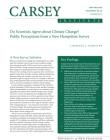
July 13, 2010
This report, a collaboration of the Carsey Institute, the UNH Survey Center, and the UNH Office of Sustainability, is the first of a new initiative that will track public perceptions about climate change as they change over time. Questions related to climate change were asked as part of New Hampshire's Granite State Poll, which surveyed 512 New Hampshire residents in April 2010.

September 28, 2010
The U.S. Census Bureau's release of its American Community Survey data in September 2010 illustrated some expected changes in poverty rates in 2009, the second year of the Great Recession. For young children under age 6, living in poverty is especially difficult, given the long-term effects on health and education. Every region of the country except the West saw increases in rural young…
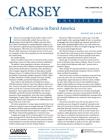
January 23, 2008
Despite their traditional residence in U.S. urban areas, Latinos represent a large and growing segment of America's rural population. Using recent data from the U.S. Census Bureau's 2006 American Community Survey (ACS), Saenz presents a profile of the Latino population in the nonmetropolitan United States.

October 4, 2010
In the second year of the recession, wives' contributions to family earnings leapt again, jumping two percentage points from 45 percent in 2008 to 47 percent in 2009. This rise marks the largest single-year increase in 15 years. This is not due to an increase in their earnings but rather to a decrease in husband’s employment, as the economy disproportionately shed male-dominated jobs during…

December 18, 2007
New Hampshire, with a total population of 1.3 million, gained 79,000 residents between 2000 and 2006. Most of this growth - 51,000 residents - came from migration. The migration also brought economic gains: New Hampshire gained at least $1.4 billion in income from migration between 2001 and 2005, and households moving in earned nearly $9,000 more than those leaving.
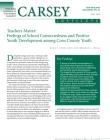
October 11, 2010
Students who feel positively about their education, have a sense of belonging in school, and maintain good relationships with students and staff generally feel connected to their schools. In fact, 63 percent of Coös youth report feeling this way.
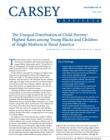
November 29, 2010
Poverty is only one of many challenges tied to a report of child neglect. The analysis in this brief finds that neglected children whose caregivers struggle with substance abuse and mental health problems are at significant risk for out-of-home placement. Risk factors for out-of-home placement for neglected children are discussed, as well as a multifaceted approach to services to prevent neglect…

October 13, 2010
Can Community Development Financial Institutions (CDFIs) get unlimited amounts of low cost, unsecured, short- and long-term funding from the capital markets based on their organizational credit risk? Can they get pricing, flexibility, and procedural parity with for-profit corporations of equivalent credit risk?

October 25, 2010
Measuring by race, place, and family, this brief highlights poverty rates for two rural groups--young black children and children of single mothers--who each face rates around 50%.
